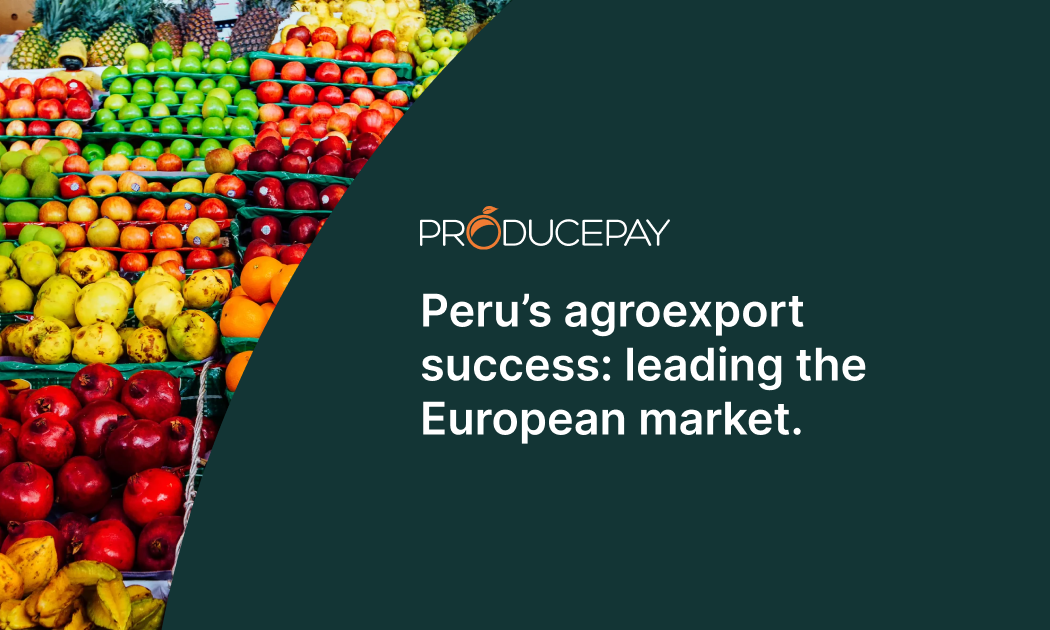
Peru’s agroexport success: leading the European market.
Peru’s high-quality agricultural products, diverse crops and commitment to sustainability make it an in-demand fresh produce supplier to European countries.
The Andean nation’s environmentally-friendly farming methods and socially responsible labor practices allows growers access to foreign markets that are increasingly demanding of ESG certifications.
Quality and sustainability certifications, such as Global GAP and Fair Trade, Rainforest Alliance, are key elements in the growth of Peru’s European exports.
Additionally, the diversity of Peru’s crops is essential to its ability to sell to foreign markets. The agri-food sector has adapted to market demands by offering a wide range of innovative and value-added products.
From the coast, with its tropical fruits and fishery products, to the Andes, with its Andean grains and high-altitude fruits, to the jungle, with its exotic fruits and cocoa, Peru’s variety of climates and soils allows it to produce an extraordinary number of different agricultural products.
Main export markets
In 2021, Peru grew its presence in the European market, particularly in the Netherlands, which imported 650,321 metric tons of Peruvian produce, representing 14.8% of total agro-exports.
Mangos, grapes, bananas and tangerines were the most purchased products by volume, accounting for 69.5% of Peru’s exports to the Netherlands.
Peru also exports high volumes to Spain, the United Kingdom, Germany, and Belgium. Collectively, these countries purchased 28.4% of Peru’s agri-exports, with avocados, coffee, onions, grapes, and tangerines making up the highest volume imports.
The United States is another important destination for Peruvian agri-exports. In 2021, the US imported 1,305,613 tons of food products, representing 29.8% of the country’s total agricultural exports.
However, the fact that the five European countries mentioned above almost matched the United States in terms of export volume, demonstrates the growing importance of the European market for the Peruvian economy.
Top exported products
Avocados were Peru’s largest export to Europe by volume in 2021, with growers shipping a record 319,515 metric tons, or 23.4% of all Peruvian agro-exports.
In second place were mangos, guavas, and mangosteens, which reached 148,719 metric tons (10.4%). Grapes came in third, with a record of 146,935 metric tons (10.2%). These three crops together accounted for 42.9% of all Peruvian agro-exports to Europe.
Peruvian bananas, coffee, tangerines, onions, asparagus, and oranges are also in high demand in European markets.
Avocados were also the most valuable export, generating a total income of $619 million, which represented 19.6% of the total value generated by Peruvian agro-exports to Europe.
In second place is coffee, which earned a total of $429 million (13.6%), followed by grapes with $323 million (10.2%). Together, these three crops accounted for 43.4% of Peru’s agro export value to Europe.
Other crops with a high export value include mangoes, asparagus, cocoa, bananas, and onions. These products are essential to the Peruvian economy, as they generate significant foreign exchange earnings and contribute to the country’s development.
A more agile intercontinental trade
Shipping by sea is the most affordable method for sending fresh produce from one continent to another. However, due to long transit times, it can take weeks or even months from when growers ship their products to when they receive payment.
The complexities of international shipping require custom solutions to help producers and buyers effectively manage the process. That’s why we’ve expanded our Quick-Pay financial service to support the export of produce from Latin America to Europe. This new service will streamline shipping, strengthen the cash position of both growers and buyers and foster transparent and trusted relationships between all parties involved.
